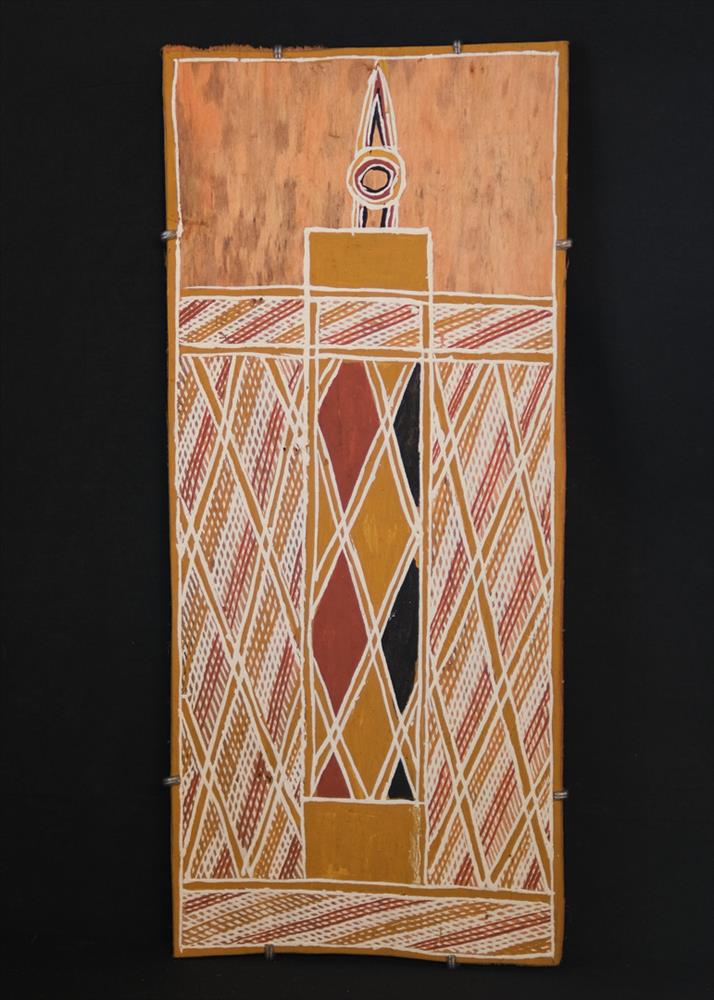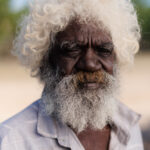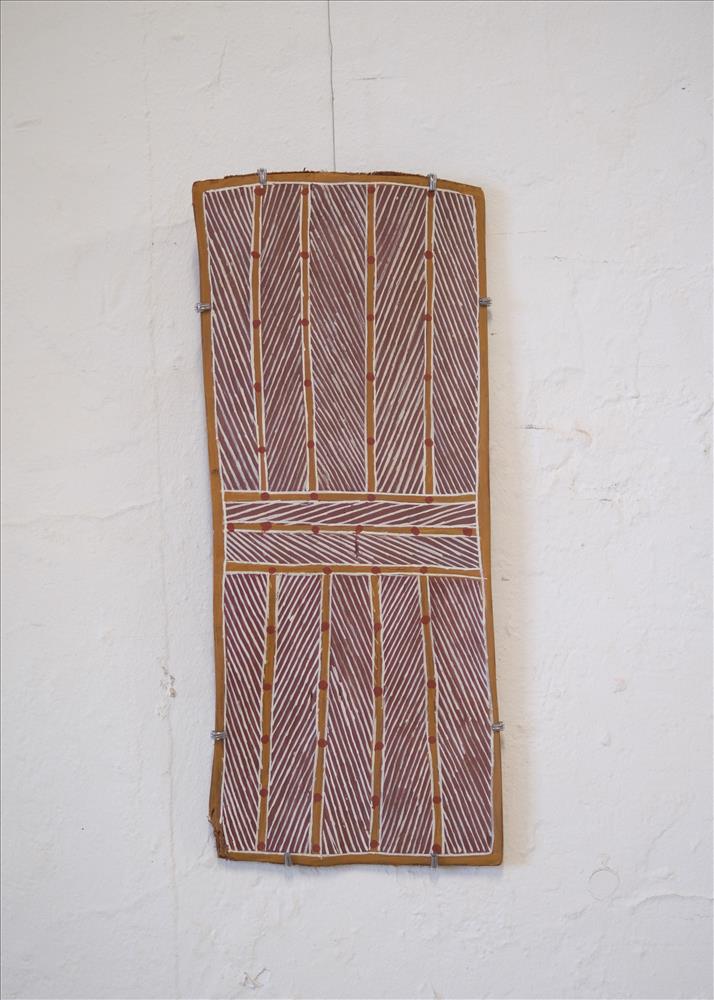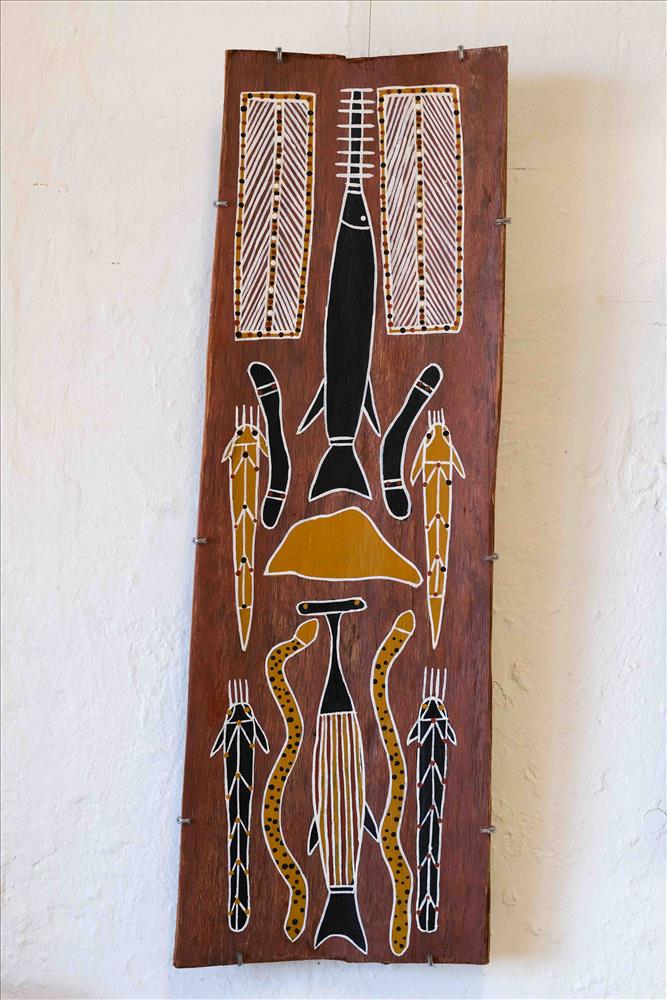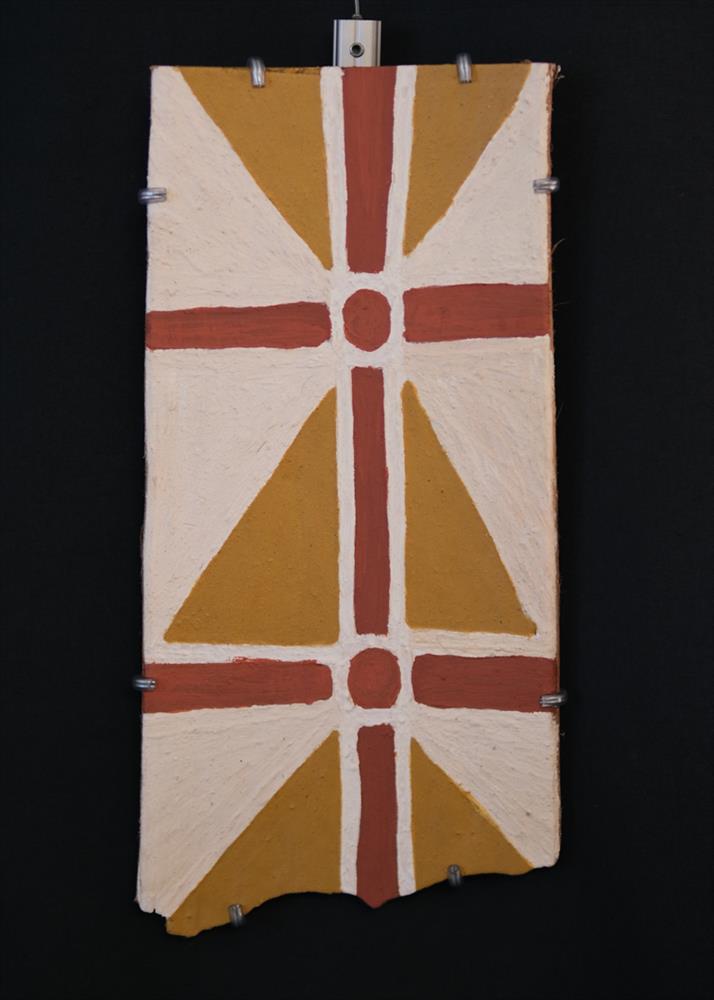Guku Galanyin (native honey bee hive) – Joe Dhamanydji
$480.00
- 57cm x 27cm
- Ochre on Bark
- Catalog No: 3778093-244-25
Guku is a primary symbol of the artists identity, Gupapuyŋu Ḏaygurrgurr clan group of the Yirritja moiety, and refers to both the native honeybee and the flowing honey they produce. Galanyin refers to the diamond shaped honeycomb that holds the honey, the hive, and is used in many iconic Gupapuyŋu miny’tji (designs). These miny’tji represent foundational legal and philosophical concepts of Gupapuyŋu thought, and are commonly painted on the bodies of men during ceremony such as Ŋärra (cleansing ceremony) and Dhapi (initiation ceremony). It is also sometimes painted on the bodies of deceased Gupapuyŋu. These designs are associated with Djiliwirri, a place south-east of Laŋarra.
Explaining this painting, the artist says “it’s in a large tree. When we cut it, we get mapu (eggs) first, and then the flowing honey.” On the right-hand side of the painting you can see the diamond pattern showing the hive full of eggs. On the left-hand side of the painting the rarrk (cross-hatching) shows the flowing honey. The artist refers to it as guku djukkul (flowing fat), explaining that mapu have a little bit of fat for the body, and honey has lots.
In the centre and across the top of the painting you can see five guyuwa, the ‘nose’ that protrudes from the hive and can be seen on the outside of the tree that hosts it. The artist explains “there were six bit one flew away and the moon was too small for him to find his way home again to Djiliwirri”.
The artist has rights and responsibilities to paint this design and tell this story in his role as an elder of the Gupapuyŋu clan. With all traditional Yolŋu stories, designs and manikay (song cycles), there are laws that prescribe who can paint, replicate and perform them. Only those with specific kinship ties to the story are allowed to paint this design. Yolŋu stories are also highly layered, and on each telling, different elements may be included or left out or emphasised, depending on the audience and context.
The artist has harvested, prepared and painted the bark himself while living at Laŋarra. In this work the artist has left the bark visible as negative space around the edge of the painting. He explains that this is how his ancestors used to paint and that he is making this style new again.
Story by Joe Dhamanydji, recorded and adapted from previous stories with Hetty Watts, February 2025.
Available
All Domestic Shipping is included within the costs of works. We will begin packing artworks the week of August 25th, when the studio re-opens. Please allow 1-3 weeks for delivery depending on the scale of the work and final destination. Please check your spam folder for tracking messages.

